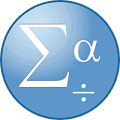
Overview
SPSS syntax is a language containing instructions for analyzing and editing data and other SPSS commands.
This SPSS Syntax Introduction course targets those who wish to gain an understanding of the basic structure of SPSS Syntax.
The course provides users of SPSS with the essential skills and knowledge required to begin to become effective and productive users of SPSS Syntax.
By the end of our course you will have learned to:
Prerequisites
Experience of working in the Windows environment and a general understanding of key Windows features. Attendees should also have basic familiarity with SPSS procedures including variable definition, entering and editing data, opening and saving data files, compute and recode procedures, dealing with output and saving output.
We can arrange your own private SPSS course.
Have us build a custom private course tailored to your needs.
If you are looking to training a group of people private courses can be very cost effective.
Unlimited post course email support on the course topics.
Very good introduction. Well paced and suited a range of experience levels.
Course was well adjusted to consider the business perspective - considering commonly needed calculations, time based data analysis etc.
The trainer did a fantastic job of delivering the course and providing understanding
Excellent course, The trainer was very helpful and taught the group a wide range of new Word skills.
Cannot fault the content & delivery of the course at all. A brilliant service from start to finish. Thank you Systematix.
Fantastic tutor. Great course! Thank you.